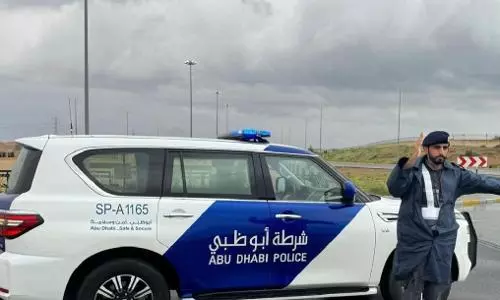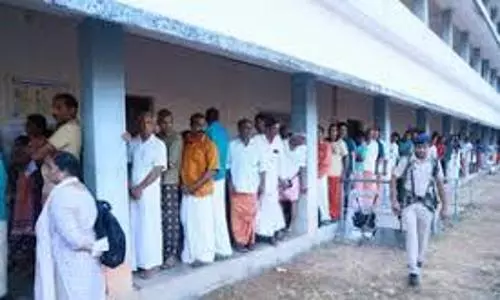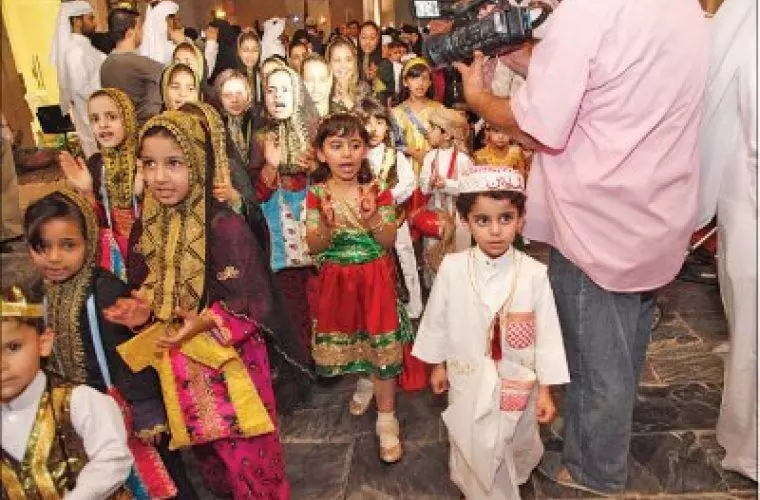
They all fast the same way; but celebrate, welcome it differently
text_fieldsGarangao celebration in Qatar
They all observe fast in the same manner and for the same duration, and break it uniformly at the appointed time, but with the diversity of cultures and traditions, the customs and traditions differ among Arab peoples about how they break the fast and indulge in other acts around that time.
True, they all are united in keeping lively Ramadan's days and nights by reading the holy Qur’an, engaging in acts of prayer and other forms of worship, maintaining kinship ties and doing charitable deeds, all of which represent authentic Ramadan customs and traditions.
In Qatar, the celebrations to welcome the holy month of Ramadan begin early, through Al Nafla, which is an old traditional habit of giving and sharing, celebrated on the 14the of Sha'aban - the month preceding Ramadan in the Hijri calendar - to rejoice at the approaching month of Ramadan.
Young and old participate in Al Nafla, where families prepare traditional dishes and share them with neighbors and the needy.
People break their fast on dates and laban (salted yogurt drink), perform Al Maghrib (sunset) prayer and then return to a table full of special Ramadan dishes. Some of the most famous dishes on the Qatari Iftar table include Harees, which is made with mashed meat and wheat, olive oil and cinnamon, as well as Threed, which is crispy flatbread with soup made of lamb, chicken or vegetables only. For one thing, Arab culinary tradition can be seen to have given heed to medical dietary advice by and large.
After the Taraweeh prayer (after the regular night prayer which occurs nearly an hour and a half after sunset), the men meet in the Qatari majlis, where they gather with friends and relatives. There is also an occasion called Ghabga night, where all kinds of dishes are served around midnight or in time for the Suhoor (pre-dawn) meal.
On Ghabga night, women gather for about 2-3 hours, where they dress-up in traditional clothing, chat with their friends and relatives, and share delicious treats that they have brought to Ghabga. Qatari people are keen to participate in Ramadan banquets set up by governmental and popular charitable organizations for the needy.
There is also a celebration named Garangao, held by Qatari and Gulf families on the night of the half of Ramadan, in honor of the children and to reward them for completing the fasting of half of the holy month, and to encourage them to continue and persevere in fasting.
On Garangao, children take a tour in the neighborhood after Ishaa prayer, knock on doors, and sing the song of Garangao, where they are received by beaming adults who delightfully distribute various types of candy and nuts on them.
Garangao is an old traditional custom that the people of the Gulf, especially Qataris, are still committed to reviving. Although its celebration has taken on a more modern character in recent years, this celebration has become a habit that government and private institutions have been keen to keep alive.
Saudi people celebrate Ramadan by buying large quantities of different types of dates to store them in refrigerators, in order to eat them with coffee or for breakfast. Saudi Arabia is distinguished by the spread of iftar sa’im (serving iftar to other fasting people) tables in Mecca and Al Madina.
In Egypt, manifestations of the celebration of the holy month spread, and the streets and mosques are decorated, and the decorations for the month of Ramadan have special rituals, so children strive to make them in the best shape, so that every street is distinguished by its own decoration0.
The Ramadan lantern is one of the most important aspects of celebrating the holy month, so no house in Egypt is devoid of the Ramadan lantern, just as the songs of the month of fasting spread everywhere, and they are heard in every street.
There are many manifestations of celebrating the holy month in Algeria, as each region has manifestations in celebrating according to its culture.
In Morocco, the month of Ramadan is called in the local dialect ‘Sayyidna Ramadan’ (Our Master Ramadan) a euphemism for its leading place over the rest of the months of the year. In the past, women used to gather on the rooftops of houses waiting to see the first crescent of Ramadan, so that they would ululate with joy at the arrival of a dear guest.
In Morocco, during the month of Ramadan, the Nafar, a town crier, roams the neighborhoods wearing a traditional robe called gandora, slippers, and a hat. Chosen by the townspeople, the Nafar’s task is to walk down the streets blowing a horn and calling people to wake them up for suhoor, the pre-dawn meal, all that would more make stuff of folklore.
In Mauritania, people have unique characteristics when it comes to celebrating the holy month of Ramadan going back to ancient times. The hair on the heads of boys, and sometimes adults, is left to grow until Ramadan and then it is shaved in honor of this holy month, a practice that has no basis in religious injunctions but is purely a tradition.
Meanwhile, in Tunisia, preparations for the month of fasting begin by cleaning houses, preparing Ramadan supplies, and buying new food utensils to celebrate the holy month.
When it comes to Jordan, families are keen to set up tents to sit in during Ramadan to exchange food between families as well as visits. In the past, the elders and imams of mosques used to choose Al-Musaharati, who used copper cups to knock them together to wake up the sleepers to eat suhoor. However, with recent developments, this profession became threatened with extinction in Jordan and the Arab world.
In Syria, specifically on the night of Sha’ban 30, judges and notables sit in the Umayyad Mosque in the city of Damascus to announce the start of fasting, and Syrian families hang lanterns, flags, and decorations on the doors and in front of their house. They also prepare sweets during the days of Ramadan, the most famous of which is Kunafa and Ma’arouk, a disk stuffed with raisins and dates topped with molasses.
In Lebanon, children practice traditional Ramadan customs, such as ‘Sibana Ramadan’ which involves taking a picnic to one of the beaches on the last day of Sha’ban and is devoted to eating what people crave from food before abstaining from it during Ramadan. The Lebanese people are keen to decorate streets and balconies with lights and lanterns.
The majority of Sudanese people do not break the Ramadan fast at home, especially in the countryside, as they go out with their tables to the streets and roads.
Sudan’s specialty drink ‘bittersweet’ is undisputedly the most popular Ramadan drink among everyone.
In faraway Comoros island, off the easternn coast of Africa, residents go on the first night of Ramadan to the beaches carrying sparkling torches, and sing a number of hymns with the beats of drums until Suhoor, marking the first day of fasting.
Suffice is to say that Ramadan in essence is one but varied are the traditions and practices around the core of fasting.
(Based on Qatar News Agency feed)
























